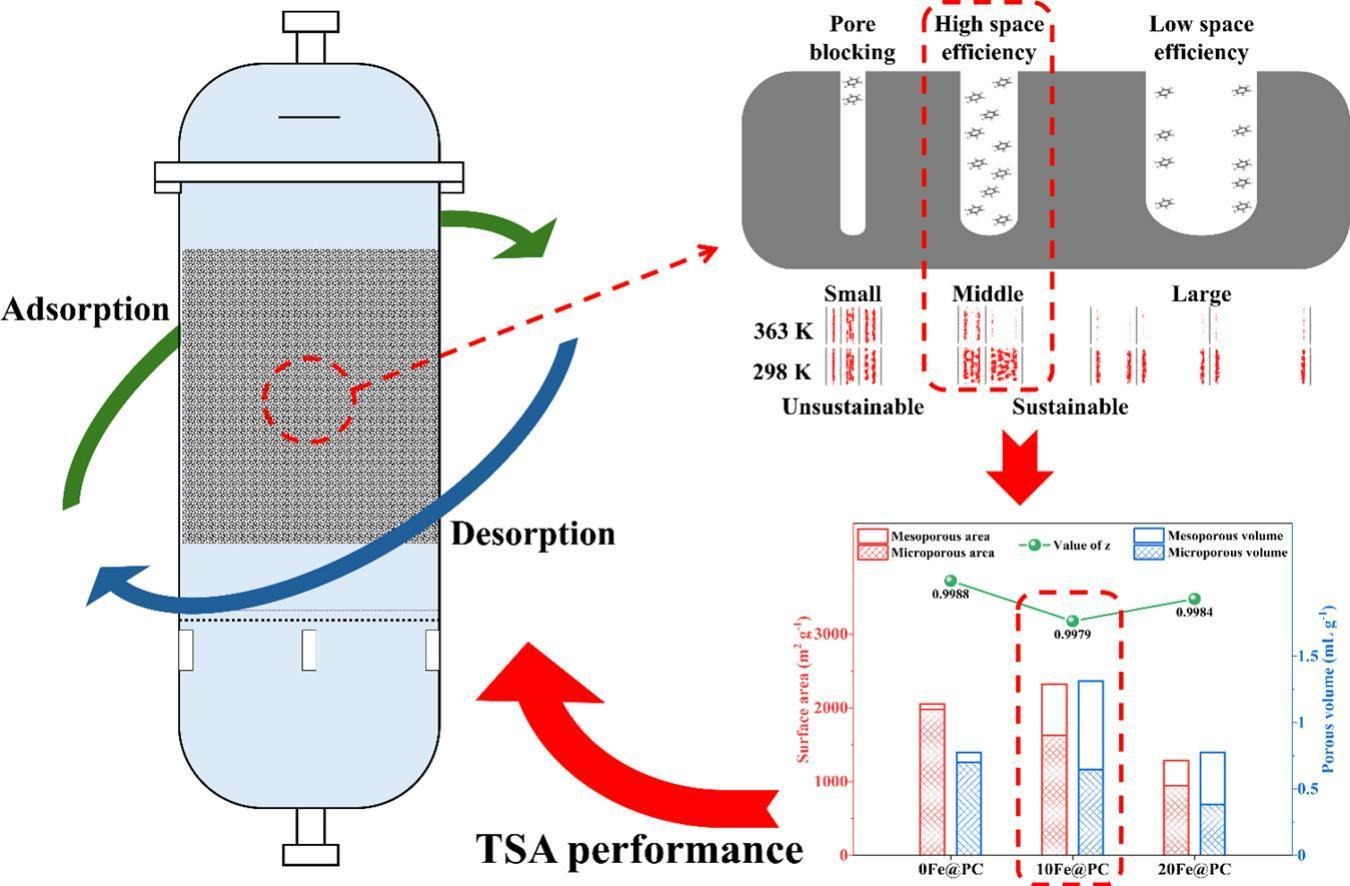The optimization of hierarchical porous carbon in temperature swing adsorption for benzene: Experimental and theoretical perspective
发布时间:2025-07-12
点击次数:
DOI码:10.1016/j.cej.2025.165845
发表刊物:Chemical Engineering Journal
关键字:Hierarchical porous carbon; TSA; Benzene; Pore blocking; Optimization
摘要:Hierarchical porous carbon is a high-effective adsorbent in temperature swing adsorption (TSA) for benzene. The optimal hierarchical porous structure can exert the synergistic effect resulting from the interaction between different pores, which is of great significance for enhancing TSA performance. Here we report on the optimization and mechanism of hierarchical porous structure in TSA. In hierarchical porous system, the maximum adsorption capacity and the adsorption intensity are determined by the specific surface area and pore size, respectively. The results of Bangham fitting show that the adsorption capacity of hierarchical porous carbon with mesoporous structure can be effectively improved by 30 % than that of microporous carbon in TSA. Simulation indicates that the intermediate pores (1.5–2.0 nm in this study) can balance adsorption intensity, desorption capacity and space efficiency, which plays a critical role in the sustainability of adsorption-desorption cycle. The average adsorption capacity of hierarchical porous carbon with the intermediate pores and mesopores is >800 mg/g in TSA for benzene. We propose an optimization strategy establishing an analytical framework to determine optimal pore size range in hierarchical porous carbons, guiding criteria for developing/selecting hierarchical porous carbons tailored for benzene capture via TSA.
论文类型:期刊论文
是否译文:否
发表时间:2025-07-10
收录刊物:SCI
发布期刊链接:https://www.sciencedirect.com/science/article/pii/S1385894725066835
上一条: Ru-containing high-entropy alloys catalysts for optimal oxygen evolution via multimetallic electronic synergy engineering
下一条: Three-Dimensional Bioprinted Scaffolds Loaded with Multifunctional Magnesium-Based Metal–Organic Frameworks Improve the Senescence Microenvironment Prompting Aged Bone Defect Repair

